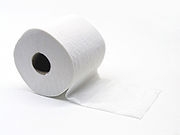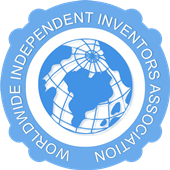- BY Admin
- POSTED IN Articles, Fără categorie
- WITH 0 COMMENTS
- PERMALINK
- STANDARD POST TYPE

Toilet paper is a soft paper product (tissue paper) used to maintain personal hygiene after human defecation or urination. It differs in composition somewhat from facial tissue, and is designed to decompose in septic tanks, whereas some other bathroom and facial tissues do not.
STORE OF INVENTIONS & TECHNOLOGIES FOR SALE : https://worldwideinvention.com/store/
Most septic tank manufacturers advise against using paper products that are non-septic tank safe. Different names and slang terms are used for toilet paper in countries around the world, including “loo roll/paper,” “toilet roll,” “dunny roll/paper,” “bathroom/toilet tissue,” “TP” or just “tissue.”
History
Wooden toilet paper from the Nara period (710 to 784) in Japan. The modern rolls in the background are for size comparison
Although paper had been known as a wrapping and padding material in China since the 2nd century BC, the first use of toilet paper in human history dates back to the 6th century AD, in early medieval China. In 589 AD the scholar-official Yan Zhitui (531–591) wrote about the use of toilet paper:
“Paper on which there are quotations or commentaries from Five Classics or the names of sages, I dare not use for toilet purposes”.
During the later Tang Dynasty (618–907 AD) a Muslim traveler to China in the year 851 AD remarked:
“They (the Chinese) are not careful about cleanliness, and they do not wash themselves with water when they have done their necessities; but they only wipe themselves with paper.”
During the early 14th century (Yuan Dynasty) it was recorded that in modern-day Zhejiang province alone there was an annual manufacturing of toilet paper amounting in ten million packages of 1,000 to 10,000 sheets of toilet paper each. During the Ming Dynasty (1368–1644 AD), it was recorded in 1393 that 720,000 sheets of toilet paper (two by three feet in size) were produced for the general use of the Imperial court at the capital of Nanjing. From the records of the Imperial Bureau of Supplies (Bao Chao Si) of that same year, it was also recorded that for Emperor Hongwu’s imperial family alone, there were 15,000 sheets of special soft-fabric toilet paper made, and each sheet of toilet paper was even perfumed.
Elsewhere, wealthy people used wool, lace or hemp for their ablutions, while less wealthy people used their hand when defecating into rivers, or cleaned themselves with various materials such as rags, wood shavings, leaves, grass, hay, stone, sand, moss, water, snow, maize, ferns, may apple plant husks, fruit skins, or seashells, and corn cobs, depending upon the country and weather conditions or social customs. In Ancient Rome, a sponge on a stick was commonly used, and, after usage, placed back in a bucket of saltwater.
The 16th century French satirical writer François Rabelais, in Chapter XIII of Book 1 of his novel-sequence Gargantua and Pantagruel, has his character Gargantua investigate a great number of ways of cleansing oneself after defecating. Gargantua dismisses the use of paper as ineffective, rhyming that: “Who his foul tail with paper wipes, Shall at his ballocks leave some chips.” (Sir Thomas Urquhart’s 1653 English translation). He concludes that “the neck of a goose, that is well downed” provides an optimum cleansing medium.
In many parts of the world, especially where toilet paper or the necessary plumbing for disposal may be unavailable or unaffordable, toilet paper is not used. Cleansing is then performed with other methods or materials, such as water, for example using a bidet, rags, sand, leaves (including seaweed), corn cobs, animal furs, or sticks.
A print by William Hogarth entitled A Just View of the British Stage from 1724 depicting Robert Wilks, Colley Cibber, and Barton Booth rehearsing a pantomime play with puppets enacting a prison break down a privy. The “play” is comprised of nothing but special effects, and the scripts for Hamlet, inter al., are toilet paper.
Modern toilet paper
Joseph Gayetty is widely credited with being the inventor of modern commercially available toilet paper in the United States. Gayetty’s paper, first introduced in 1857, was available as late as the 1920s. Gayetty’s Medicated Paper was sold in packages of flat sheets, watermarked with the inventor’s name. for the product used the tagline “The greatest necessity of the age! Gayetty’s medicated paper for the water-closet.”
Seth Wheeler of Albany, New York, obtained the earliest United States patents for toilet paper and dispensers, the types of which eventually were in common usage in that country.
The advantages of toilet paper are that it is easy and intuitive to use, fairly absorbent, and it can be flushed in most countries where toilet paper is common. Most modern sewage systems, including septic tanks, can accept toilet paper along with human excreta.
Toilet paper is available in several types of paper, a variety of colors, decorations, and textures and may be moistened or perfumed.
Toilet paper products vary immensely in the technical factors that distinguish them: sizes, weights, roughness, softness, chemical residues, “finger-breakthrough” resistance, water-absorption, etc. The larger companies have very detailed, scientific market surveys to determine which marketing sectors require/demand which of the many technical qualities. Modern toilet paper may have a light coating of aloe or lotion or wax worked into the paper to reduce roughness. Quality is usually determined by the number of plies (stacked sheets), coarseness, and durability. Low grade institutional toilet paper is typically of the lowest grade of paper, has only one or two plies, is very coarse and sometimes has small amounts of unbleached/unpulped paper embedded in it. Mid-grade two ply is somewhat textured to provide some softness, and is somewhat durable. Premium toilet paper may have lotion and wax, and has two to four plies made of very finely pulped paper.
Two-ply toilet paper is the standard in many countries, although one-ply is often available and marketed as a budget option, it may also be more appropriate for use in toilets on boats and in camper-vans. Toilet paper, especially if it is marketed as “luxury”, may be quilted or rippled (embossed), perfumed, colored or patterned, medicated (with anti-bacterial chemicals), treated with aloe, etc. Many novelty designs are also available on toilet paper, from cute cartoon animals to pictures of disfavored political celebrities to pictures of dollar bills. Women who are prone to vaginal Candidiasis yeast infections are advised by some medical experts to use white, unperfumed toilet paper.
Moist toilet paper was first introduced by the Kimberly-Clark in the United Kingdom by Andrex in the 1990s, and in the United States in 2001, two countries in which bidets are rare. It is designed to clean better than dry toilet paper after defecation, and may be useful for women during menstruation.
The manufacture of toilet paper is a large industry. Twenty-six billion rolls of toilet paper, worth about US$2.4 billion, are sold yearly in America alone. Americans use an average of 23.6 rolls per capita a year.




